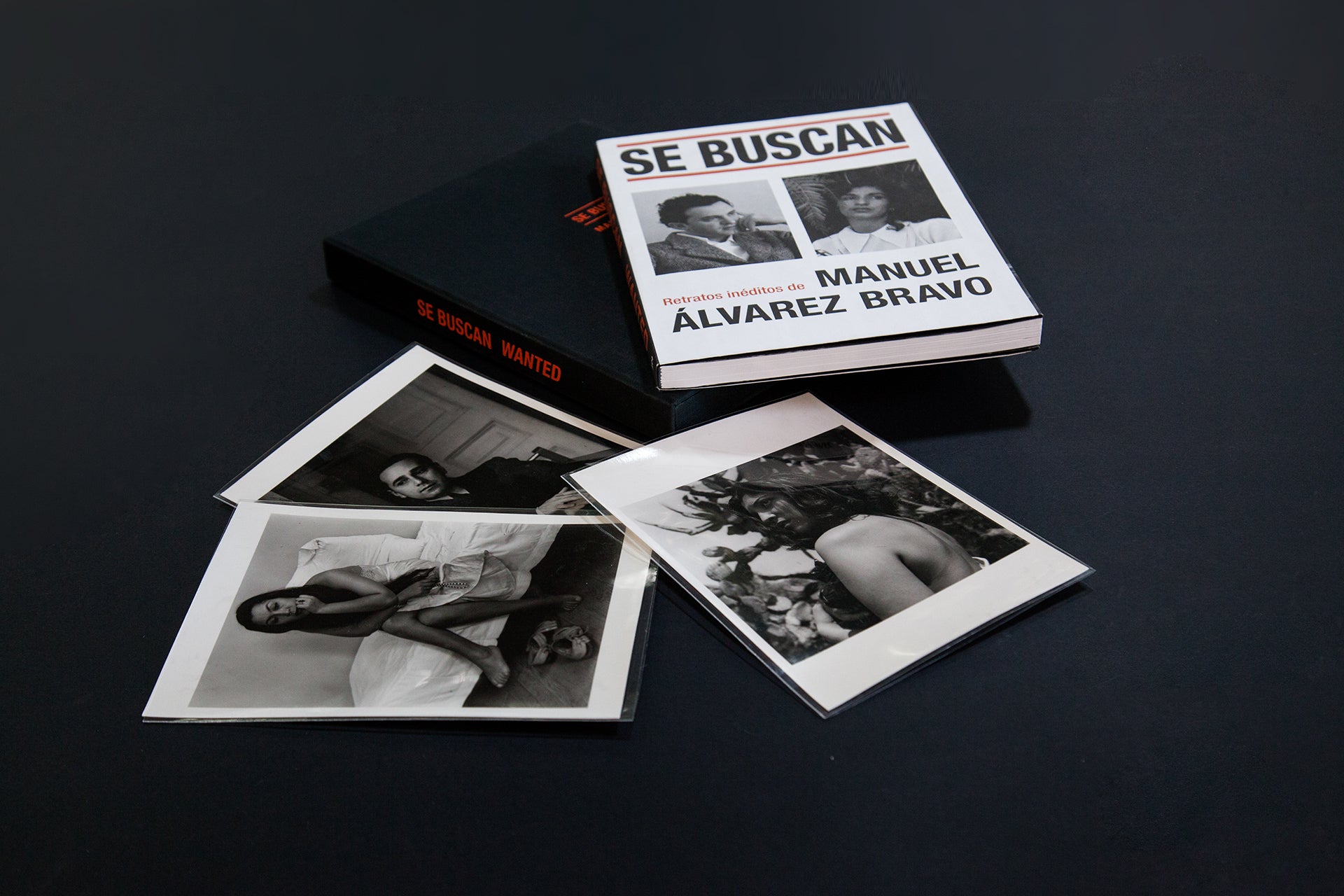SE BUSCANUNPUBLISHED PORTRAITSMANUEL ÁLVAREZ BRAVO
SPECIAL EDITION
SOLD OUT

ABOUT THIS BOOK
This book arose from the initiative of the Manuel Álvarez Bravo Archive to display a wide selection of portraits taken by the author Bravo between the 1930s and the 1950s. Through this playful approach to the archive as a container of collective memory, Se buscan poses a reflection on the photographic medium and the activation of the image through interaction with the public. The book, in turn, plays with the identification cards and the data of the archive itself, including the information of the portraits already identified and of those who identified them. Both the interior, the cover, and the design of the shirt that becomes a poster alluding to those of people who are publicly sought, the book offers a different approach to the work of this extraordinary and iconic Mexican author. These portraits were selected from the cataloguing of the photographer's negatives by the Manuel Álvarez Bravo Archive over a period of a little more than five years. We had fun trying to guess who these people might have been and we made up stories about them, imprisoned in the confinement of their boxes, they had escaped, however, in time and space because their identities were unknown and questioned over and over again. We decided to become their accomplices and try to help them escape from their anonymity, and what better way than with the collaboration of the greatest number of people".
ABOUT MANUEL ÁLVAREZ BRAVO
Manuel Álvarez Bravo, one of the founders of modern photography worldwide, is considered the greatest representative of 20th century Latin American photography. His work spans from the late 1920s to the 1990s.
He was born in the centre of the Mexican capital on 4 February 1902. He interrupted his studies at the age of twelve when his father died and began to work to help with the family economy, in a textile factory and later in the General Treasury of the Nation.
His grandfather, a painter, and his father, a teacher, were both fond of photography. His early discovery of the possibilities of the camera led him to explore all photographic procedures as well as graphic techniques as a self-taught artist.
Initially he tackled pictorialism, influenced by his painting studies at the Academy of San Carlos. He then explored modern aesthetics, discovering cubism and the possibilities of abstraction. In 1930 he took up documentary photography: Tina Modotti, when deported from Mexico, left him her work for the magazine Mexican Folkways and he began to work for the mural painters Diego Rivera, José Clemente Orozco and David Alfaro Siqueiros.
Álvarez Bravo is an emblematic figure of the post-Mexican Revolution period known as the Mexican Renaissance. It was a period whose richness was due to the happy, though not always serene, coexistence of a desire for modernisation and the search for an identity with its own roots, in which archaeology, history and ethnology played an important role, parallel to the arts. Álvarez Bravo embodies both trends in the field of the plastic arts.
From 1943 to 1959 he worked in the cinema making still photographs, which led him to produce some personal experiments.
During his lifetime, he presented more than 150 solo exhibitions and participated in more than 200 group exhibitions. According to many critics, the work of this "poet of the lens" expresses the essence of Mexico, but the humanist outlook reflected in his work and the aesthetic, literary and musical references it contains also give it a universal dimension.
Died on 19 October 2002, aged 100.
1 Size: 17.5 x 23.5 x 1 cm
Number of pages: 85
Offset Printing
Print run 100
Languages: Spanish and English
SPECIAL EDITION
It includes:
3 photos printed on silver gelatine
Cardboard box with fabric
